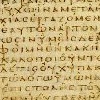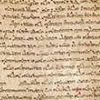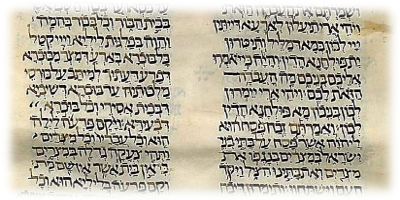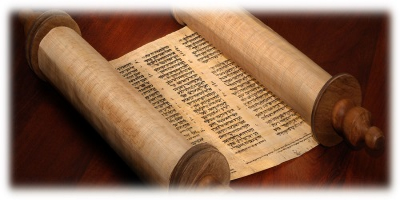There are two different ancient texts of the New Testament; the Greek version and the Aramaic version (called the Peshitta). While most people are familiar with the Greek New Testament, very few are even aware that an Aramaic New Testament even exists.

4th Century Greek Manuscript |

5th Century Aramaic Manuscript |
The oldest and most complete Greek manuscripts are the Codex Sinaiticaus and the Codex Vaticanus. Both of these date to the 4th Century AD. The oldest and most complete Aramaic manuscript is British Library, Add. 14470, which dates to the 5th Century AD. While each of these texts were scribed 300 to 400 years after the events of the New Testament, they are each undoubtedly copies of previous manuscripts.
The question in regards to the original New Testament text is;
- Was the New Testament originally written in Greek and then translated into Aramaic?
- Was the New Testament originally written in Aramaic and then translated into Greek?
Beside these two questions, there is another possibility to the origins of the New Testament. Hebrew, a sister language to Aramaic, was predominately used by Jews in the 1st century AD for both religious and secular writings, as attested to in the Dead Sea Scrolls. While no ancient Hebrew manuscripts of the New Testament exist today, it is possible that they did exist at one time, which poses two other questions.
- Was the New Testament originally written in Hebrew (A sister language of Aramaic and predominately used for religious texts by the Jews in the 1st Century AD) and then translated into Aramaic, which was then translated into Greek?
- Was the New Testament originally written in Hebrew and then translated into Aramaic and Greek?
If the New Testament was originally written in Greek, then the Greek New Testament, and the translations from the Greek, will be the more reliable text. However, if the New Testament was originally written in Hebrew or Aramaic, then the Aramaic New Testament, and the translations from the Aramaic, will be the more reliable text.
The debate for a Greek primacy to the New Testament vs. an Aramaic primacy of the New Testament has been the subject of debate for a very long time. While the majority of Western Christian churches hold to a Greek primacy for the New Testament, the majority of Eastern Christian churches hold to an Aramaic primacy for the New Testament.
While there is evidence to support a Semitic origin of the New Testament (also see this Wikipedia article), it is not the intention of this article to prove one side of this debate over the other, it is to make the reader aware of the debate.
Translations from the Greek texts
There are a multitude of translations of the Greek New Testament in many different languages. Some of the more popular English translations from the Greek text include; the King James Version, the Revised Standard Version, the New International Version and the New American Standard Bible. Two of the more popular Hebrew translations of the Greek New Testament are the Salkinson-Ginsburg translation and the Delitzsch translation.
Translations from the Aramaic texts
As for the Aramaic New Testament, translations are very few, the most popular being George Lamsa's translation and the Aramaic English New Testament. For a Hebrew translation of the Aramaic text there is The New Covenant Aramaic Peshitta text with Hebrew translation, which is the New Testament that I use in my New Testament studies and research.
Comparing the Greek and Aramaic New Testaments
Matthew 19:24 (a camel or rope?)
| Greek: | πάλιν δὲ λέγω ὑμῖν, εὐκοπώτερόν ἐστιν κάμηλον διὰ τρυπήματος ῥαφίδος εἰσελθεῖν ἢ πλούσιον εἰς τὴν βασιλείαν τοῦ θεοῦ |
| Translation (KJV): | And again I say unto you, It is easier for a camel to go through the eye of a needle, than for a rich man to enter into the kingdom of God. |
| Aramaic: | ܬܘܼܒ݂ ܕܹܝܢ ܐܵܡܲܪܢܵܐ ܠܟ݂ܘܿܢ: ܕܲܕ݂ܠܝܼܠ ܗܘܼ ܠܓܲܡܠܵܐ ܠܡܸܥܠ ܒܲܚܪܘܿܪܵܐ ܕܲܡܚܲܛܵܐ. ܐܵܘ ܥܲܬ݁ܝܼܪܵܐ ܕܢܸܥܘܿܠ ܠܡܲܠܟܘܼܬ݂ܵܐ ܕܐܲܠܵܗܵܐ. |
| Translation: | And again I say to you, that it is easier for a rope to enter into the eye of a needle than for a rich man to enter into the kingdom of God. |
Like what you’re discovering? Continue the journey from Bible reader to translator.
|






